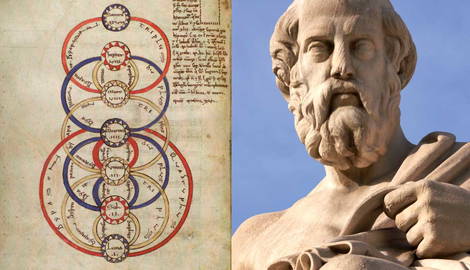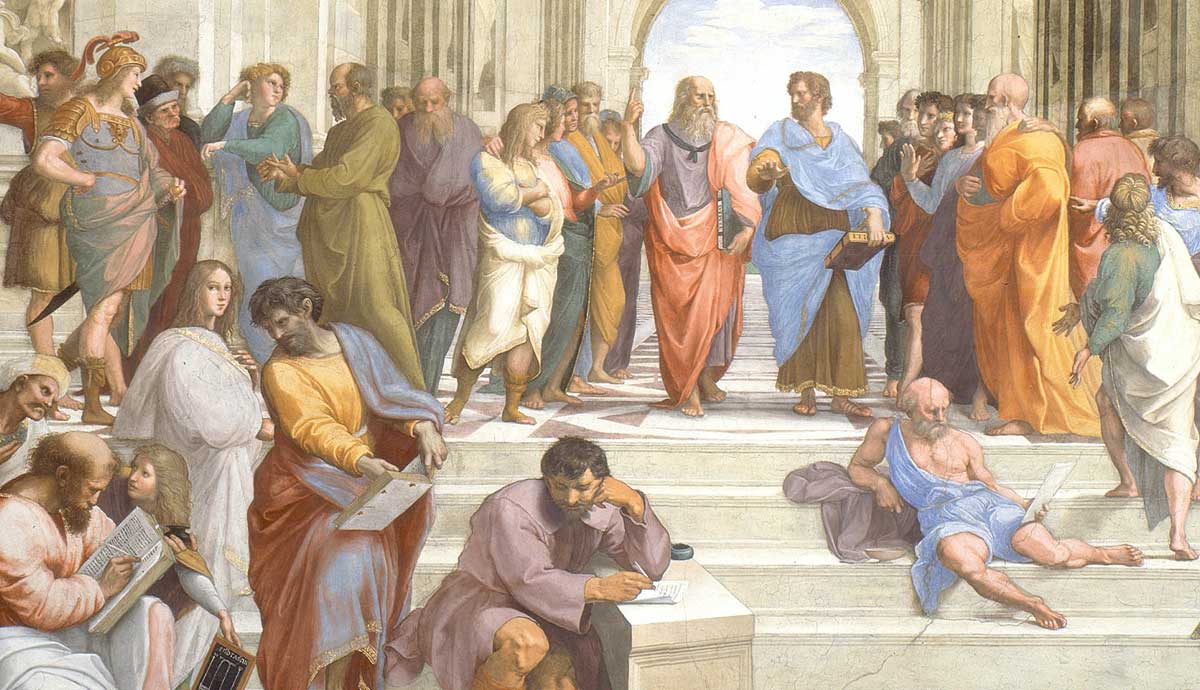
The Timaeus is one of Plato’s most influential dialogues, in which the implications of various other components of Plato’s thought upon the fundamental structure of reality is explored. It is also one of Plato’s later dialogues. As with many of these later dialogues, the Timaeus’ structure, the style in which it is delivered and the motivation behind it are difficult to grasp without a measure of prior context.
This article aims to provide this context, beginning with an attempt to situate the dialogue in Plato’s wider thought. This means touching on Platonic metaphysics; that is, his overall theory of reality. It also means summarizing what happened in the Republic, the dialogue which directly precedes the Timaeus. It is only then that the most difficult interpretative question of the Timaeus can be broached in an informed way: what is the relationship between the cosmology of the Timaeus and Plato’s understanding of the universe?
What Happens in Plato’s Timaeus?

The Timaeus begins with an attempt to pick up a conversation from a previous day, in which Socrates set out his conception of the ideal city. This is ordinarily understood to be the conversation which was recorded in the Republic, another dialogue. Plato has linked other dialogues together by suggesting that they happen on consecutive days; this is the relationship between Theaetetus and Sophist, for example.
In any case, an extrapolation of the workings of this ideal city constitutes the first part of the dialogue, which is – in theory – the focus of three speeches, by Socrates’ three companions. The third, last and longest speech, given by Timaeus, takes such a turn that it is ordinarily considered the second part of this dialogue, and is largely considered to be of the greater philosophical interest. His speech is full of expansive theorizing on the nature and structure of the cosmos at large.
Introducing the First Part of the Dialogue

If the first part of the dialogue can be conceived of as both an extension and reiteration of what is said in the Republic, two questions raise themselves immediately. Firstly, what does happen in the Republic? Secondly, in what manner is what happens in the Republic reiterated and extended in the Timaeus?
It is extremely difficult to answer the first succinctly. In the simplest possible terms, the Republic is the description of a city. Not any city which actually exists, but an ideal city. In particular, it is a description of the political and social arrangements which sustain the existence of this ideal city.
It is worth noting that the subtitle given to the Republic is ‘On Justice’, and certainly we could characterize Plato’s project as partly concerned with developing a concept of justice. What begins as a discussion of justice eventually transforms into a discussion of the most difficult and abstract questions of philosophy, and an extensive discussion of the key concepts of Platonic metaphysics.
Extending the Vision of the Republic

Socrates asks his companions to expand on what he had already set out in the Republic, but he asks them to do so in a specific way. He says that reflecting on the previous day’s discussion that his “feelings are like those of a man who gazes upon magnificent looking animals, whether they’re animals in a painting or even actually alive but standing still, and who then finds himself longing to look at them in motion or engaged in some struggle or conflict that seems to show off their distinctive physical qualities. I felt the same thing about the city we’ve described.”
Socrates therefore asks his companions to imagine this ideal city in a state of war (“competing for those prizes that cities typically compete for”), and to tell him what that would be like. Timaeus will go on to state explicitly that the universe is not a static arrangement, but is itself a living thing, an animal, and therefore a fluid and dynamic system – just the kind of thing which Socrates argues cannot be conceived of fully without placing it in motion.
Prefiguring the Latter Section

What is important here is that Socrates’ demand seems to prefigure the cosmology which Timaeus will set out in a negative way. His demand is to see a thing fully in motion, or as close as possible to it. Just as a political theory of the kind we find in the Republic – a general, prescriptive set of principles – renders an organic and fluid organism in a static way, so too does cosmology in some deeper sense. ‘Deeper’ because, whilst I can reasonably claim myself to be a citizen of some city or state, I cannot assume my own place within the cosmos at large, and so cannot even define the perspective from which I choose to theorize it.
Socrates as much as says this, when he dismisses sophists – a kind of traveling teacher – as unfit for the task he has set on the grounds that “they wander from one city to the next and never settle down in homes of their own”.
Timaeus’ Cosmology

Timaeus’ account of the universe appears to unfold in three stages. First, he proposes an account of the Intellect. Second, an account of Necessity. Third, an account of the relationship between the two.
The account the Intellect is, in part, an account of the Universe’s creator, which is the most famous and most influential feature of the whole dialogue. According to Timaeus, a divine Craftsman is responsible for the construction and sustenance of the universal order. The most prominent feature of the latter is the balance between the Sameness, Difference and Being, which are kept in perfect proportion by the Craftsman.
The Craftsman is ungrudging and wholly good, and his total goodness is represented in the total goodness of the universe he creates. There is much that follows from this insight: for instance, the universe is held to be a living thing (literally, an animal) because only animals can be intelligent, and it is better for something to be intelligent than otherwise.
The Craftsman and the Forms

This introduction of the Craftsman deity, the duality of Intelligence and Necessity, and the various other concepts central to Timaeus’ cosmology seems to beg the question of how this all fits together with Plato’s metaphysics – that is, his general theory of reality – as far as can be established in the wider Platonic corpus.
The central division in Plato’s metaphysics is ordinarily understood as that which exists between the world of appearance and the world of the Forms. The world of appearance is the world as we ordinarily experience it, talk about it and think of it. The world of the Forms is true reality, in which the concepts which structure and determine the world of appearance are freely available. Our ability to understand the Forms comes from philosophy. Although this is a vast over-simplification, it serves to underline some of the major differences between Plato’s conception of reality and that which Timaeus appears to set out.
Plato and Timaeus

Now, it is worth acknowledging that the Forms are a part of Timaeus’ cosmology, though their specific function within it (and, therefore, their importance) is disputed. Accepting that there are some major points of difference between these conceptions of reality, its creation, and our place within it, there seem to be two options available to us.
We can attempt a reconciliation, to explain these differences in a synthetic way, which seems implausible given the distinctive concepts and emphasis in the Timaeus, as already set out. Alternatively, we can accept that Timaeus’ speech is not representative of Plato’s own thought; perhaps it is an alternative conception of reality which is being subjected to oblique criticism. The fact that Timaeus’ metaphysics does integrate Platonic concepts, and is presented as an extension of Socrates’ project makes the latter option difficult to accept.
The Universe According to Plato’s Timaeus

To understand how the Timaeus should be interpreted, we should again consider the impossibility of Socrates’ demand to see the subject of a discourse ‘in motion’, when that subject is the universe at large. Timaeus is explicit about the difficulties of this kind of theorizing, and the necessary reservation one must have towards a cosmology given the extraordinary scale of the subject being theorized.
Equally, we need to acknowledge that one of the Timaeus’ distinctive qualities is that it is not a dialogue but, for the most part, a monologue. It is a rhetorical work, not a conversational one, and Plato has been clear in earlier works that this changes things.
Whilst the best use of rhetoric will not deviate from philosophical truth, it will embellish and illustrate the point the speaker is making. In other words, it is a feature of proper rhetoric to describe the same thing differently, to different people. The Timaeus can thus be understood not as Plato’s definitive, final cosmology, but as one version of it among several (or many) plausible versions.










